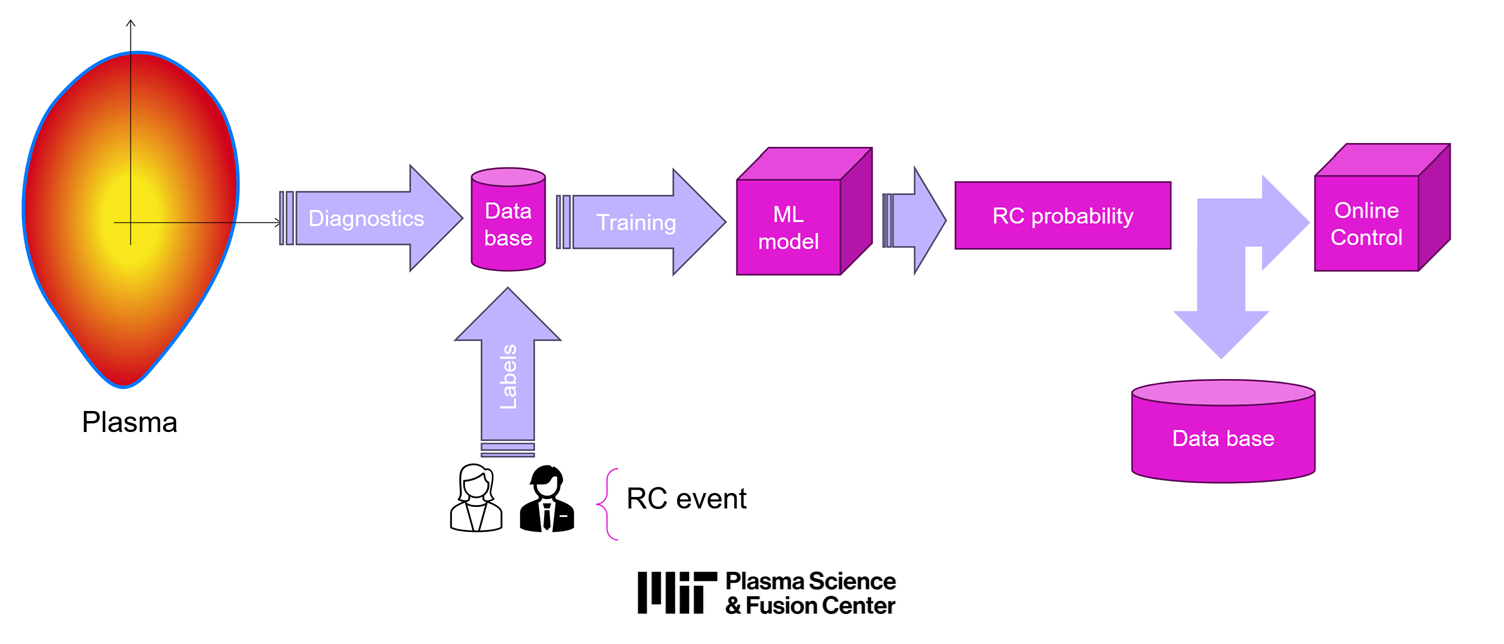Radiative instabilities (or radiative collapses) in fusion plasmas occur when radiation losses become significant enough to locally cool the plasma, leading to the flattening of temperature and density profiles, potentially disrupting the plasma equilibrium and hindering fusion reactions. These instabilities are often precursors to disruptions in tokamaks and loss of performance, which can be detrimental to experimental operations.
One of the main radiation sources is the presence of impurities in the plasma. These can for example be introduced through wall sputtering events, which occur when the plasma-facing components are impacted by energetic plasma ions, scraping off material from the walls that ends up contaminating the plasma. When the heavy impurities introduced into the plasma radiate, they release plasma energy, lowering the local plasma temperature.
The possibility of melting events due to excessive radiation is another deleterious factor affecting fusion viability, directly linked to radiation-induced energy losses. However, controlled radiation events can be beneficial. For example, the intentional injection of impurities into the plasma to dominantly exhaust heat through radiation serves as an alternative to divertor-based heat exhaust, since radiation disperses energy more isotropically, reducing the heat load that would otherwise be concentrated on the divertor. Differentiating which impurity accumulations lead to either disruptions, melting events, or controlled heat exhaust is necessary to manage scenarios in future fusion reactors like SPARC or ARC.
The lack of comprehensive first-principle models for most radiative instabilities, combined with the availability of many years of experimental data, enables the development of AI models to support instability-management strategies.
In this project, we propose to augment existing databases tailored to SPARC scenarios to allow the development of data-driven algorithms for radiative instabilities – including a focus on plasma confinement identification – aiming to achieve an integrated plasma state characterization and enabling early, prompt disruption prevention strategies and better scenario design.
The labeled database can then be used to train state-of-the-art machine learning algorithms for the detection and prediction of radiative collapse events. As operators learn how to tune the seeding recipe, the probability of plasma disruptions due to radiative instabilities can be reduced. Detection of radiative collapse at its onset can be used to benignly terminate the plasma, preventing melt events or enabling other control and mitigation strategies.

This project is sponsored by Eni via the MITei framework and led by postdoctoral associate Enrique Zapata under Cristina Rea’s supervision. Collaborators include Ryan Sweeney (CFS), members of the MIT PSFC Disruptions team like Alex Saperstein, William Wei and Henry Wietfeldt, and counterparts at Eni.